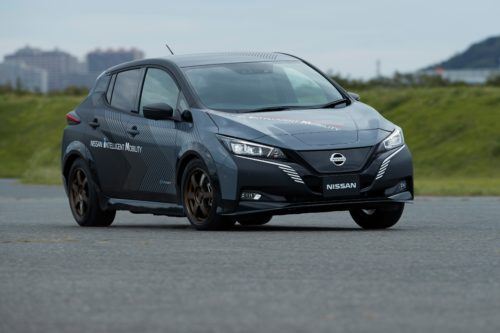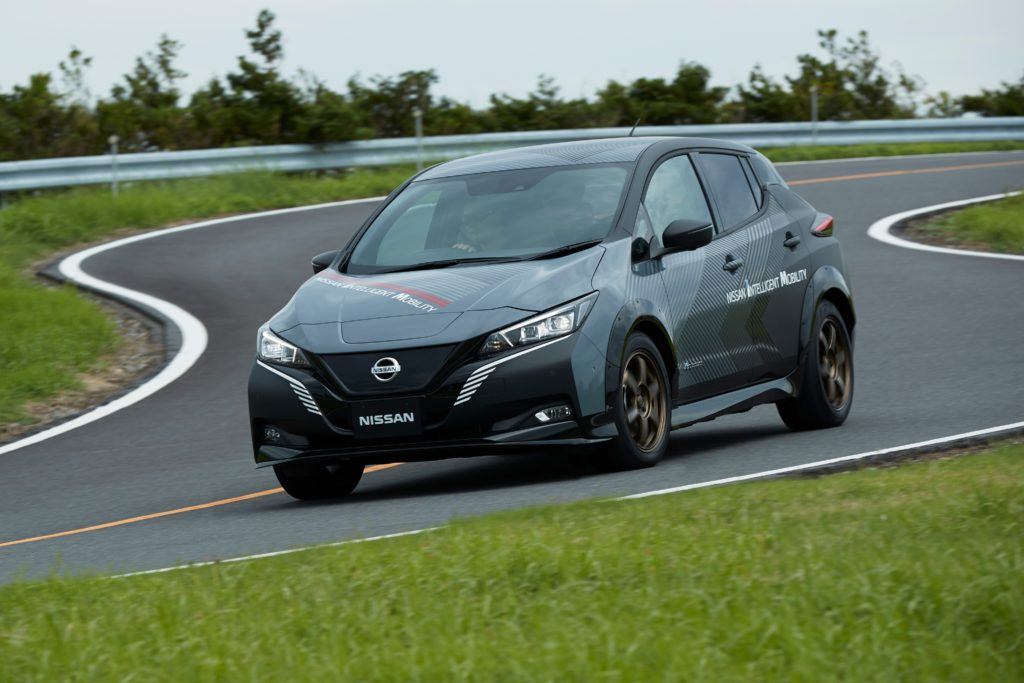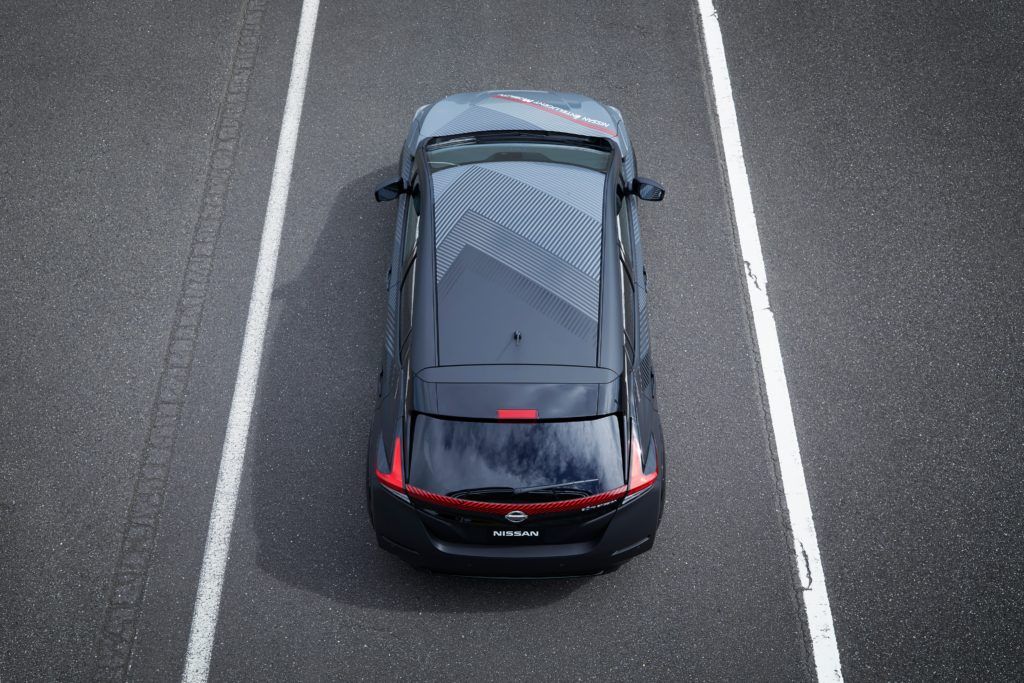
As more electric vehicles find their way onto the market, Nissan is working on a special twin-motor, all-wheel-control test car. This Nissan Leaf prototype, based on the Leaf e+, is outfitted with an array of new tech currently under development for Nissan’s next line of EVs. The company says they are aiming for a more engaging experience behind the wheel.
“The new electric-drive, four-wheel-control technology now being developed integrates Nissan’s electric propulsion and 4WD control technologies with our chassis control technology to achieve a huge leap in acceleration, cornering, and braking performance, on par with the latest sports cars,” explained Takao Asami, Nissan Senior Vice President for Research and Advanced Engineering.
Lots of Torque (But Comfortable Too)
The Leaf EV tester uses separate front and rear electric motors that provide a maximum output of 304 horsepower and 501 lb-ft. of torque. To compliment the power, Nissan is engineering “ultra-high-precision” controls in the hopes their next EV will be more comfortable to drive. Nissan seems keen on building up the driving dynamics of their forthcoming EV line. Perhaps they want to overcome the notion EVs are boring, although a J.D. Power review in February gave the current Leaf high marks for driving dynamics.

How Does The Nissan Leaf Prototype Work?
The way the vehicle employs regenerative braking to prevent itself from pitching and diving is really interesting. The Nissan Leaf prototype does it simultaneously at the front and rear to reduce the feeling of being “shaken back and forth” according to the company.
- Related: The electric car is dead, long live the electric car!
Similarly, on rough or bumpy roads and when accelerating, the motor controls minimize irregular and erratic movements. Further, the system applies independent braking at each of the four wheels to maximize the cornering force of each tire. This type of setup will help drivers feel more confident behind the wheel says Nissan because it can handle a variety of road conditions.

Nice Inside
Despite being a tester, it’s not exactly Spartan on the inside. The 12.3-inch display sits atop the instrument panel and provides real-time info on the vehicle’s control systems. The display helps drivers better understand what is happening as the Nissan Leaf prototype is heading down the road.
And those even look like sport cloth seats!

What Will Nissan Do With This?
That’s hard to say and Nissan didn’t give us any additional details. It’s unlikely this beastly powertrain will land in the new Leaf, but something does seem brewing in the automaker’s EV department. “Soon, Nissan will launch a next-generation EV that will be a true breakthrough,” Asami said. Fair enough. We just hope whatever it is, they offer it in a Midnight Edition.
Nissan Leaf Prototype Gallery
Photos & Source: Nissan North America.










